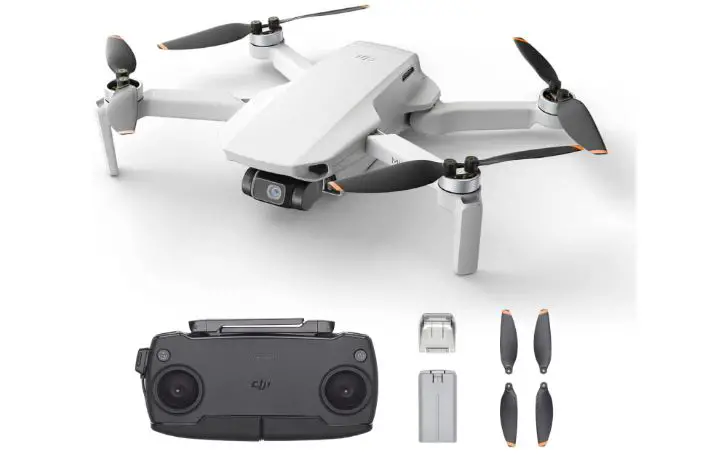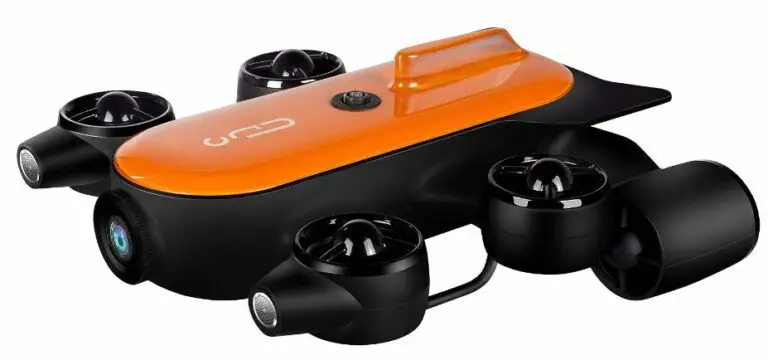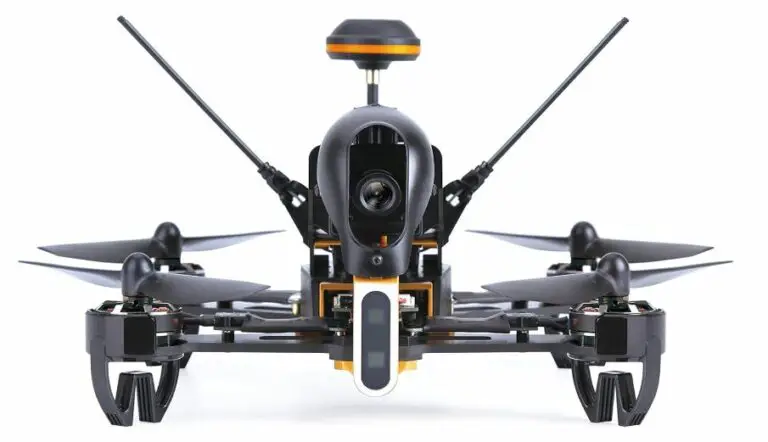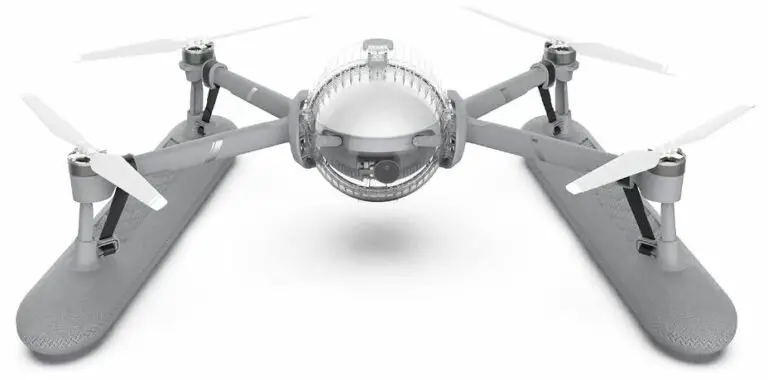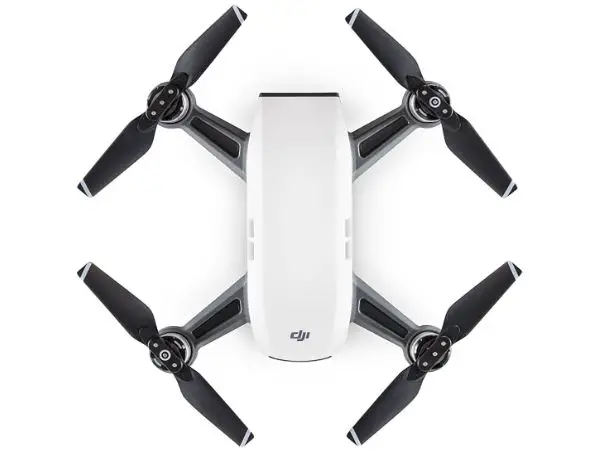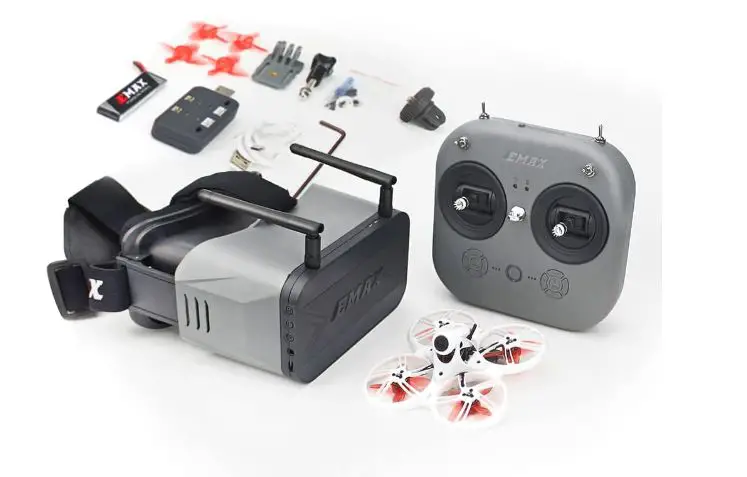Small Drone or Big Drone – Size Matters
Introduction
Drones, also known as unmanned aerial vehicles (UAVs), come in various sizes, ranging from small, compact models to large, professional-grade aircraft. Each size category offers unique capabilities, features, and applications, catering to different needs and preferences of drone users. In this guide, we will explore the differences between small drones and big drones, examining their characteristics, uses, and considerations for choosing between them.
Small drones, often referred to as mini drones or micro drones, are lightweight and portable, making them ideal for recreational use, aerial photography, and indoor flying. They are typically equipped with basic features such as a built-in camera, altitude hold, and automated flight modes, offering ease of use and maneuverability for beginners and hobbyists.
On the other hand, big drones, also known as professional drones or industrial drones, are larger and more powerful, designed for commercial applications such as aerial surveying, mapping, agriculture, and filmmaking. They are equipped with advanced features such as high-resolution cameras, GPS navigation, obstacle avoidance, and payload capabilities, enabling professional-grade aerial imaging and data collection.
In this guide, we will delve into the characteristics, uses, and considerations for choosing between small and big drones, helping you make an informed decision based on your specific requirements and preferences. Whether you’re a hobbyist looking for a fun and versatile drone or a professional seeking a high-performance aerial platform, understanding the differences between small and big drones will help you find the right fit for your needs.
Understanding Small Drones
Small drones, also known as mini drones or micro drones, are compact and lightweight unmanned aerial vehicles (UAVs) designed for recreational flying, aerial photography, and indoor use. These drones are typically characterized by their small size, portability, and ease of operation, making them suitable for beginners, hobbyists, and enthusiasts.
Key features and characteristics of small drones include:
- Compact Size: Small drones are designed to be compact and lightweight, allowing for easy transport and storage. Their small form factor makes them ideal for traveling, hiking, or carrying in a backpack.
- Portability: Small drones are highly portable, making them convenient for on-the-go flying adventures. Their lightweight construction and foldable design make them easy to carry and transport to different locations.
- Ease of Operation: Small drones are often equipped with user-friendly features and intuitive controls, making them easy to fly for beginners and novice pilots. They may include features such as one-touch takeoff and landing, altitude hold, and automated flight modes for enhanced stability and control.
- Built-in Camera: Many small drones come with a built-in camera or gimbal mount for attaching a camera, allowing users to capture aerial photos and videos. While the camera quality may vary depending on the model, small drones offer the ability to capture stunning aerial footage without the need for expensive professional equipment.
- Short Flight Time: Due to their compact size and lightweight construction, small drones typically have shorter flight times compared to larger drones. Battery life may range from 5 to 30 minutes, depending on the model and usage conditions.
- Indoor Flying Capabilities: Small drones are well-suited for indoor flying due to their compact size and lightweight design. They can navigate tight spaces and confined environments with ease, making them ideal for practicing flying skills or capturing aerial footage indoors.
- Affordability: Small drones are generally more affordable compared to larger drones, making them accessible to a wide range of users, including beginners and hobbyists. They offer a cost-effective entry point into the world of drone flying and aerial photography.
- Limited Range and Payload Capacity: Small drones typically have limited range and payload capacity compared to larger drones. They are designed for short-range flights and may not be suitable for long-distance aerial missions or carrying heavy payloads.
Overall, small drones offer a fun and accessible way to experience the thrill of flying and capture stunning aerial photos and videos. Their compact size, portability, ease of operation, and affordability make them popular choices for beginners, hobbyists, and enthusiasts looking to explore the world of drone flying and aerial photography.
Understanding Big Drones
Big drones, also known as professional drones or industrial drones, are large and powerful unmanned aerial vehicles (UAVs) designed for commercial and professional applications. These drones are characterized by their larger size, extended flight capabilities, advanced features, and payload capacity, making them suitable for a wide range of professional aerial tasks.
Key features and characteristics of big drones include:
- Large Size: Big drones are significantly larger than small drones, with a wingspan ranging from several feet to several meters, depending on the model and application. Their larger size allows for increased stability, payload capacity, and flight endurance.
- Payload Capacity: Big drones are capable of carrying heavier payloads, such as high-resolution cameras, multispectral sensors, LiDAR scanners, thermal imaging cameras, and other specialized equipment. This allows them to perform a variety of aerial tasks, including aerial surveying, mapping, inspection, surveillance, and aerial filming.
- Extended Flight Time: Big drones typically have longer flight times compared to small drones, with battery life ranging from 20 minutes to several hours, depending on the model, payload, and flight conditions. Some big drones are equipped with swappable batteries or fuel-powered engines for extended flight endurance.
- Advanced Features: Big drones are equipped with advanced features and capabilities to meet the demands of professional users. These may include GPS navigation, waypoint navigation, autonomous flight modes, obstacle avoidance, altitude hold, and precision landing systems, providing enhanced control and flexibility during flight operations.
- High-Performance Cameras: Big drones are often equipped with high-performance cameras or camera gimbals capable of capturing high-resolution photos and videos. Professional-grade cameras may include features such as optical zoom, mechanical stabilization, and adjustable camera settings for capturing detailed aerial imagery.
- Remote Sensing Capabilities: Big drones are used for various remote sensing applications, including aerial surveying, mapping, agriculture, environmental monitoring, and disaster response. They are equipped with specialized sensors and imaging systems for collecting data and generating detailed maps, 3D models, and point clouds of the terrain.
- Cost: Big drones are typically more expensive than small drones due to their larger size, advanced features, and specialized capabilities. They are investment-grade tools used by professionals and organizations for commercial applications, requiring a higher upfront cost and ongoing maintenance.
- Regulatory Compliance: Big drones may be subject to additional regulations and licensing requirements compared to small drones, especially when used for commercial purposes. Professional drone operators must adhere to aviation regulations, airspace restrictions, and safety guidelines to ensure legal and safe operation.
Overall, big drones offer a powerful and versatile platform for professionals and organizations engaged in various commercial and industrial applications. Their large size, extended flight capabilities, advanced features, and payload capacity make them indispensable tools for aerial surveying, mapping, inspection, surveillance, filmmaking, and other professional tasks. Understanding the capabilities and applications of big drones is essential for maximizing their potential and leveraging their benefits in diverse industries and sectors.
Comparison of Small and Big Drones
When considering whether to choose a small drone or a big drone, it’s essential to weigh their respective features, capabilities, and applications. Here’s a comparison of small and big drones across various key factors:
- Size and Portability:
- Small Drones: Compact and lightweight, easy to transport and carry, suitable for on-the-go flying adventures and indoor use.
- Big Drones: Larger and heavier, less portable, may require transportation in a dedicated case or vehicle, suitable for professional applications with larger operational areas.
- Flight Time:
- Small Drones: Typically have shorter flight times ranging from 5 to 30 minutes, limited by their small battery capacity and lightweight construction.
- Big Drones: Generally have longer flight times ranging from 20 minutes to several hours, with larger batteries or fuel-powered engines enabling extended flight endurance.
- Payload Capacity:
- Small Drones: Limited payload capacity, typically capable of carrying lightweight cameras or small accessories, suitable for recreational aerial photography and videography.
- Big Drones: Higher payload capacity, capable of carrying heavier cameras, sensors, and equipment for professional applications such as aerial surveying, mapping, and inspection.
- Camera Quality:
- Small Drones: Equipped with built-in cameras or camera gimbals capable of capturing basic aerial photos and videos, with limited resolution and image stabilization.
- Big Drones: Often equipped with high-performance cameras or camera systems capable of capturing high-resolution photos and videos with advanced features such as optical zoom, mechanical stabilization, and adjustable settings.
- Flight Stability and Control:
- Small Drones: Generally offer stable flight characteristics and intuitive controls suitable for beginners and casual users, with features such as altitude hold and automated flight modes for enhanced stability.
- Big Drones: Provide advanced flight control capabilities, including GPS navigation, waypoint navigation, obstacle avoidance, and autonomous flight modes, offering precise control and flexibility for professional aerial tasks.
- Cost:
- Small Drones: More affordable than big drones, with lower upfront costs and minimal ongoing maintenance expenses, making them accessible to a wide range of users.
- Big Drones: Higher upfront costs and ongoing maintenance expenses due to their larger size, advanced features, and specialized capabilities, requiring a significant investment for professional use.
- Applications:
- Small Drones: Suitable for recreational flying, aerial photography, and videography, as well as indoor flying and practicing flight skills.
- Big Drones: Used for a wide range of professional applications, including aerial surveying, mapping, agriculture, construction, inspection, surveillance, filmmaking, and environmental monitoring, among others.
- Regulatory Compliance:
- Small Drones: Subject to less stringent regulations and licensing requirements compared to big drones, with fewer restrictions on recreational and hobbyist use.
- Big Drones: Subject to more comprehensive regulations and licensing requirements, especially when used for commercial purposes, requiring compliance with aviation regulations, airspace restrictions, and safety guidelines.
In summary, the choice between a small drone and a big drone depends on your specific needs, preferences, and intended applications. Small drones offer portability, affordability, and ease of use, making them suitable for recreational flying and casual aerial photography. Big drones provide advanced features, extended flight capabilities, and higher payload capacity, making them indispensable tools for professional aerial tasks and commercial applications. Understanding the differences and considering your requirements will help you make an informed decision when choosing between small and big drones.
Factors to Consider When Choosing Between Small and Big Drones
When choosing between small and big drones, several factors should be considered to ensure that you select the most suitable option for your needs and preferences. Here are the key factors to consider:
- Intended Use and Applications:
- Consider the primary purpose for which you plan to use the drone. Are you looking for a recreational drone for casual flying and aerial photography, or do you require a professional-grade drone for commercial applications such as aerial surveying, mapping, inspection, or filmmaking? The intended use will influence the size, features, and capabilities you need in a drone.
- Portability and Transportation:
- Evaluate your transportation and storage requirements. If you need a drone that is easy to carry and transport for on-the-go flying adventures, a small drone with a compact and lightweight design may be more suitable. However, if you have access to larger transportation options and need a drone with extended flight capabilities, a big drone may be a better choice despite its less portability.
- Flight Time and Battery Life:
- Consider the flight time and battery life of the drone, which will determine how long you can fly before needing to recharge or replace the batteries. Small drones typically have shorter flight times ranging from a few minutes to half an hour, while big drones offer longer flight times ranging from 20 minutes to several hours. Choose a drone with sufficient flight time to meet your operational needs and preferences.
- Payload Capacity and Camera Quality:
- Assess the payload capacity and camera quality of the drone, especially if you plan to use it for aerial photography, videography, or other professional applications. Small drones have limited payload capacity and may only support lightweight cameras or accessories, while big drones offer higher payload capacity and are capable of carrying heavier cameras, sensors, and equipment for capturing high-quality aerial imagery.
- Flight Stability and Control:
- Consider the flight stability and control features of the drone, particularly if you are a beginner or novice pilot. Small drones generally offer stable flight characteristics and intuitive controls suitable for beginners, while big drones provide advanced flight control capabilities, including GPS navigation, obstacle avoidance, and autonomous flight modes, offering precise control and flexibility for professional aerial tasks.
- Cost and Budget:
- Determine your budget for purchasing a drone and compare the costs of small and big drones within your price range. Small drones are generally more affordable than big drones, with lower upfront costs and minimal ongoing maintenance expenses. However, big drones require a higher investment due to their larger size, advanced features, and specialized capabilities, making them suitable for professional use and commercial applications.
- Regulatory Compliance and Licensing Requirements:
- Familiarize yourself with the regulatory requirements and licensing obligations for drone operation in your country or region. Depending on the size, weight, and intended use of the drone, you may need to comply with aviation regulations, airspace restrictions, and safety guidelines, especially if you plan to use the drone for commercial purposes. Ensure that the drone you choose meets the regulatory requirements and is properly licensed and registered for legal and safe operation.
By considering these factors when choosing between small and big drones, you can select the most suitable option that meets your specific needs, preferences, and operational requirements. Whether you’re a recreational enthusiast, a professional drone operator, or an organization seeking aerial solutions, understanding the differences and considering your priorities will help you make an informed decision and find the right drone for your intended use.
Applications and Use Cases
Small Drones:
- Recreational Flying: Small drones are perfect for recreational flying in parks, open spaces, and backyards. They provide an enjoyable experience for hobbyists and enthusiasts.
- Aerial Photography and Videography: Small drones equipped with built-in cameras or gimbals are used to capture aerial photos and videos for personal or social media use.
- Indoor Flying: Due to their compact size and lightweight design, small drones are ideal for indoor flying, allowing users to practice flying skills or capture footage in confined spaces.
- Educational Purposes: Small drones are used in educational settings to teach students about aerodynamics, robotics, and drone technology.
- Search and Rescue: Small drones equipped with cameras and thermal imaging sensors can assist in search and rescue operations by providing aerial reconnaissance in hard-to-reach areas.
Big Drones:
- Aerial Surveying and Mapping: Big drones are used for aerial surveying and mapping applications, including land surveying, topographic mapping, and 3D modeling of terrain.
- Agriculture: Big drones equipped with multispectral sensors and NDVI cameras are used for precision agriculture applications such as crop monitoring, pest detection, and yield estimation.
- Infrastructure Inspection: Big drones are used to inspect infrastructure assets such as bridges, dams, power lines, and pipelines for damage assessment, maintenance, and monitoring.
- Construction and Mining: Big drones are employed in construction and mining industries for site monitoring, volumetric analysis, and progress tracking of construction projects and mine sites.
- Filmmaking and Cinematography: Big drones equipped with high-resolution cameras and cinema-grade gimbals are used for aerial cinematography and filmmaking, capturing cinematic shots and sequences for movies, TV shows, and commercials.
- Environmental Monitoring: Big drones are used for environmental monitoring and conservation efforts, including wildlife tracking, habitat assessment, and pollution monitoring.
- Emergency Response: Big drones equipped with cameras and sensors can assist emergency response teams in disaster management, providing real-time situational awareness and reconnaissance of disaster-affected areas.
- Security and Surveillance: Big drones are used for security and surveillance purposes, including border patrol, perimeter security, event monitoring, and crowd control.
- Delivery and Logistics: Big drones are being explored for delivery and logistics applications, including package delivery, medical supply transport, and cargo transportation in remote or inaccessible areas.
Overall, small drones are well-suited for recreational and hobbyist use, while big drones offer advanced capabilities and specialized features for professional and commercial applications across various industries and sectors. Understanding the applications and use cases of both small and big drones can help users choose the right drone for their specific needs and requirements.
Cost Considerations
Cost considerations when choosing between small and big drones vary significantly based on several factors, including upfront purchase price, ongoing maintenance expenses, and operational costs. Here’s a breakdown of cost considerations for both types of drones:
- Upfront Purchase Price:
- Small Drones: Generally more affordable than big drones, with lower upfront costs due to their simpler design, smaller size, and fewer advanced features. Entry-level small drones can be purchased for as little as $50 to $200, depending on the brand, model, and features.
- Big Drones: Significantly more expensive than small drones, with higher upfront costs due to their larger size, advanced features, and specialized capabilities. Professional-grade big drones can range from $1,000 to $10,000 or more, depending on the brand, model, payload capacity, and included accessories.
- Ongoing Maintenance Expenses:
- Small Drones: Generally have lower ongoing maintenance expenses compared to big drones, as they are less complex and have fewer moving parts. Maintenance tasks for small drones may include occasional cleaning, propeller replacement, and battery charging, which incur minimal costs.
- Big Drones: Often have higher ongoing maintenance expenses due to their larger size, more complex components, and advanced features. Maintenance tasks for big drones may include regular inspections, firmware updates, motor replacement, and professional servicing, which can incur additional costs over time.
- Replacement Parts and Accessories:
- Small Drones: Replacement parts and accessories for small drones, such as propellers, batteries, and camera mounts, are generally more affordable and readily available compared to big drones. However, the cost of replacement parts can add up over time if frequent repairs or upgrades are needed.
- Big Drones: Replacement parts and accessories for big drones, such as motors, propellers, camera gimbals, and flight controllers, can be more expensive due to their larger size and specialized design. Additionally, accessories such as extra batteries, chargers, and carrying cases may incur additional costs.
- Insurance and Liability Coverage:
- Small Drones: Insurance and liability coverage for small drones are generally more affordable compared to big drones, as they pose lower risks and liabilities. Basic liability insurance may be sufficient for recreational and hobbyist use, offering coverage for accidental damage or injury caused by the drone.
- Big Drones: Insurance and liability coverage for big drones are essential for commercial and professional use, as they involve higher risks and liabilities. Comprehensive insurance policies may be required to cover liability, property damage, theft, and other potential risks associated with commercial drone operations, which can incur higher premiums and costs.
- Training and Certification:
- Small Drones: Training and certification requirements for small drones are generally less stringent compared to big drones, as they are primarily used for recreational and hobbyist purposes. Basic knowledge of drone flying and safety guidelines may be sufficient for operating small drones safely and legally.
- Big Drones: Training and certification requirements for big drones are more rigorous, especially for commercial and professional use. Pilots may need to undergo formal training programs, obtain remote pilot certificates, and comply with regulatory requirements and licensing obligations, which can incur additional costs for training courses and certification exams.
- Operational Costs:
- Small Drones: Operational costs for small drones are generally lower compared to big drones, as they consume less power, require fewer maintenance tasks, and have lower insurance premiums. However, operational costs may vary depending on factors such as battery life, flight frequency, and usage patterns.
- Big Drones: Operational costs for big drones can be higher due to their larger size, longer flight times, and higher energy consumption. Additionally, operational costs may include expenses for transportation, storage, equipment maintenance, and compliance with regulatory requirements, which can add to the overall cost of drone ownership.
Overall, cost considerations when choosing between small and big drones depend on various factors such as upfront purchase price, ongoing maintenance expenses, insurance coverage, training requirements, and operational costs. Understanding the total cost of ownership for both types of drones is essential for making an informed decision and selecting the most cost-effective option based on your specific needs, preferences, and budget.
Maintenance and Care Tips
Proper maintenance and care are essential for ensuring the longevity, performance, and safety of your drone. Here are some maintenance and care tips to keep your drone in top condition:
- Read the User Manual:
- Familiarize yourself with the manufacturer’s recommendations and guidelines for operating, maintaining, and troubleshooting your drone. The user manual contains valuable information on assembly, calibration, flight modes, and maintenance procedures specific to your drone model.
- Pre-flight Checks:
- Conduct pre-flight checks before each flight to ensure that your drone is in proper working condition. Check the battery level, propellers, motors, and other components for signs of damage or wear. Verify that the firmware and flight control settings are up to date.
- Calibration:
- Calibrate your drone’s sensors, compass, and GPS system regularly to ensure accurate flight performance and stability. Follow the manufacturer’s instructions for calibrating the drone’s sensors and compass in a suitable location free from magnetic interference.
- Battery Care:
- Properly charge and store your drone batteries according to the manufacturer’s recommendations. Avoid overcharging or discharging the batteries excessively, as this can reduce their lifespan and performance. Store batteries in a cool, dry place at the recommended storage voltage.
- Propeller Maintenance:
- Inspect the propellers for damage, cracks, or deformities before each flight. Replace any damaged or worn propellers to ensure smooth and stable flight. Clean the propellers and motor shafts regularly to remove dirt, debris, and dust buildup.
- Motor Maintenance:
- Check the motors for signs of overheating, corrosion, or abnormal noise during operation. Keep the motor bearings lubricated with a small amount of silicone-based lubricant to prevent friction and wear. Replace any worn or damaged motors as needed.
- Camera and Gimbal Care:
- Clean the camera lens and gimbal mechanism regularly with a soft microfiber cloth to remove dirt, smudges, and fingerprints. Avoid touching the lens directly with your fingers to prevent scratches or damage. Use lens cleaning solution or compressed air for stubborn dirt or debris.
- Frame Inspection:
- Inspect the drone’s frame and structural components for signs of cracks, dents, or damage after each flight. Check for loose screws, bolts, or fasteners and tighten them as needed to ensure the integrity of the frame. Replace any damaged or worn parts to prevent structural failure.
- Storage and Transportation:
- Store your drone in a clean, dry, and dust-free environment when not in use. Use a protective case or bag to transport your drone safely and prevent damage during travel. Secure the propellers and remove the battery before storing or transporting the drone.
- Weather Conditions:
- Avoid flying your drone in adverse weather conditions such as strong winds, rain, snow, or fog, as these can affect flight stability and safety. Monitor weather forecasts and choose suitable flying conditions for optimal performance and safety.
- Software Updates:
- Keep your drone’s firmware and software up to date by regularly checking for updates from the manufacturer. Firmware updates may include bug fixes, performance improvements, and new features that enhance the functionality and stability of your drone.
- Flight Record Keeping:
- Keep a record of your drone’s flight history, including flight logs, maintenance tasks, and any incidents or accidents. This information can help you track the drone’s performance, identify potential issues, and troubleshoot problems more effectively.
By following these maintenance and care tips, you can prolong the lifespan of your drone, ensure safe and reliable operation, and enjoy many hours of flying fun and aerial photography. Regular maintenance and proper care are essential for maximizing the performance, longevity, and safety of your drone investment.
FAQs
What are the main differences between small and big drones?
Big drones are larger and heavier than small drones, which are often more compact and lightweight. Larger drones frequently offer bigger payload capacities and longer flight periods.
What are the advantages of using a small drone?
Smaller drones are typically more transportable and portable. They may not need as much governmental authorisation for recreational usage and are frequently less expensive. Small drones can fit into tight locations and are less scary.
What are the advantages of using a big drone?
Big drones can carry heavier payloads, making them suitable for professional applications such as aerial photography, mapping, and cargo delivery. They often have longer flight times and can withstand adverse weather conditions better.
What should I consider when choosing between a small and big drone for photography or videography?
For professional photography and videography, big drones are often preferred due to their stability, better camera systems, and payload capacity. However, small drones can still capture excellent footage in some cases, especially when portability is a concern.
Are there any restrictions or regulations based on drone size?
Drone regulations vary by country and region, but in many places, there are stricter rules for big drones, including the need for licenses or permits. Be sure to check local regulations before flying.
Can small drones be used for recreational racing or FPV (First-Person View) flying?
Yes, small drones are commonly used for recreational drone racing and FPV flying due to their agility and ease of maneuverability.
Which type of drone is better for beginners?
Small drones are generally recommended for beginners since they are easier to learn to operate, less expensive, and typically subject to fewer rules. They provide a wonderful starting point for learning to fly.
Can big drones be used for search and rescue operations?
Yes, because they can carry specialist equipment like thermal cameras and payloads for dropping supplies or lifesaving equipment, large drones are frequently utilized for search and rescue missions.
Are there size limitations for drone delivery services?
Although the size of drones used for delivery services can vary, many businesses use larger drones for package delivery because they can carry heavier payloads farther.
Conclusion
In the world of drones, size indeed matters, but it’s not a one-size-fits-all scenario. The choice between small and big drones should align with the specific needs of the project or application. As technology continues to advance, we can expect both small and big drones to become more capable, versatile, and accessible, opening up new possibilities across various industries. Whether you’re a hobbyist or a professional, understanding the strengths and limitations of different drone sizes will help you make informed decisions when selecting the right tool for the job.

